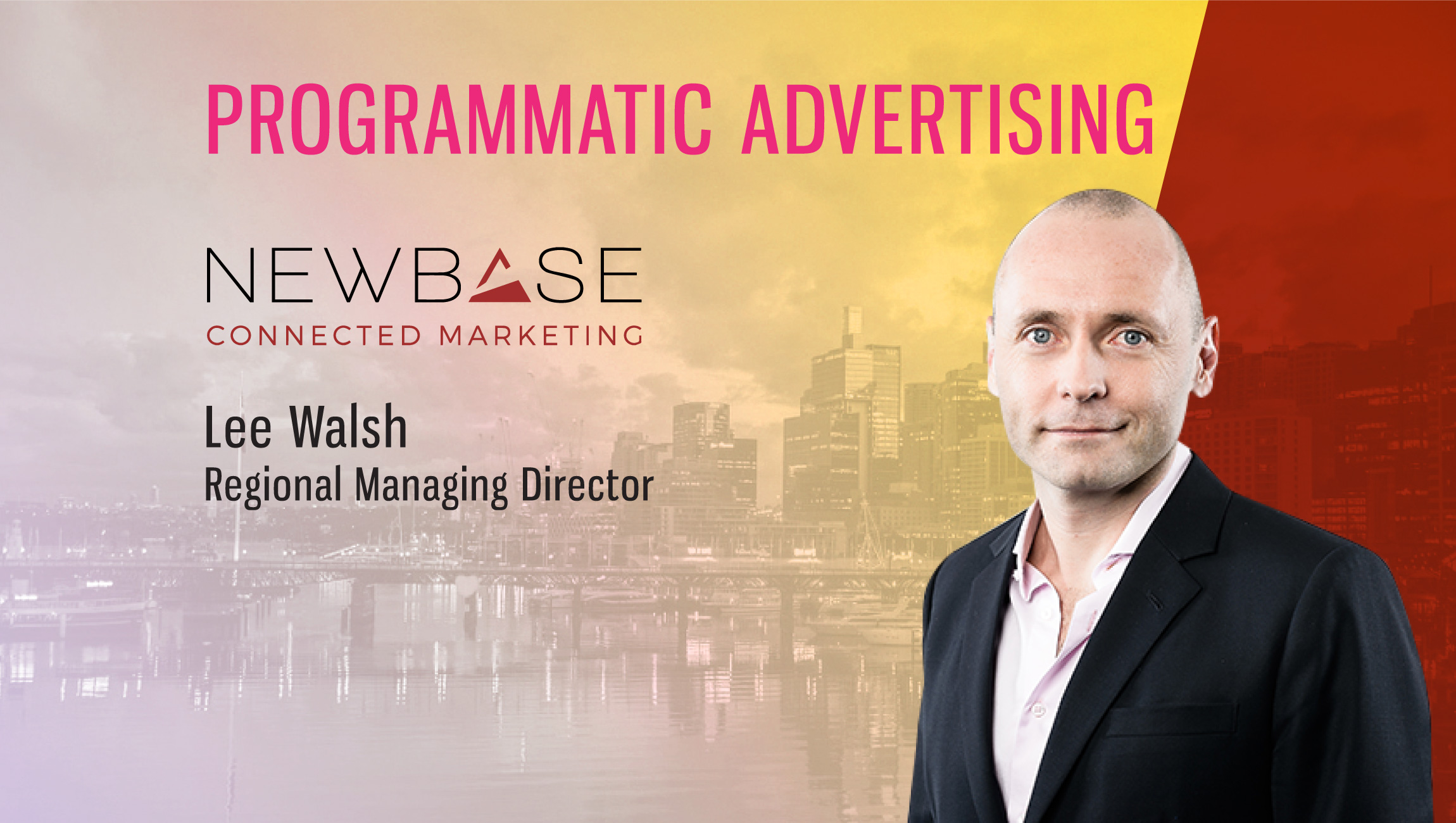Lee Walsh
Regional Managing Director, NewBase
Programmatic advertising is a fascinating technology. Each geography is growing at its own ‘sweet’ pace. Asia, in particular, is more diverse and complex compared to the markets in the Americas and Europe. Lee Walsh, Regional Managing Director, NewBase, gives us an inside view of the Asian advertising ecosystem and helps us to understand the nature of the American and European digital advertising markets.
Html code here! Replace this with any non empty text and that's it.
Tell us about your role at NewBase and the team/technology you handle.
I manage the South East Asia and India region for NewBase. This covers eight offices across five markets.
We mainly work with our own platform, NewBase View. This is designed to give advertisers complete visibility of where their money is being spent in the digital supply chain.
We also work closely with premium publishers, with a large focus on content and native advertising.
How do you define Transparency and Brand Safety in advertising in today’s world?
For me, transparency is very simple. An advertiser should be able to see where their money is spent in the supply chain, what happens to their data and where their messages appear. This should also include any rebates an agency is receiving for managing their money.
Brand safety is a little more difficult to define as a safe environment can be subjective depending on the brand and the user. I think the smartest and simplest approach to brand safety is to lower the number of environments where your message is appearing.
What is the state of ‘Programmatic Advertising and Performance reporting’ in 2018?
In Asia it is mixed. We still get many major agencies and brands focused on superficial measures of clicks and CTR. Even the brands tracking sales have little view of the lifetime value of a customer or attribution. I don’t think that this is a uniquely Asian problem, but in parts of the region, there is a more conservative approach to channeling spend to areas which are perceived to work.
How can brands take back control of their programmatic media buying?
I think the easiest way is to establish a direct billing relationship with ad tech vendors and media owners.
Most marketing departments lack the resource or will to have an in-house programmatic team. Agencies should play a vital role in campaign management and optimization. Brands will have to start paying agencies properly for this role and not expect it for free.
What makes Asian advertising ecosystem different from their American and European counterparts?
Asia is incredibly diverse and not a homogeneous block of countries. Places like China, Korea and Japan essentially have their own digital eco-systems that are very different from the rest of the world.
If you look at how the Chinese e-commerce or messaging sectors have evolved they are fascinating and genuinely leading the world.
The SE Asia and Australian eco-systems are very similar to Western markets, with Google and Facebook accounting for the vast majority of digital spend and growth. It’s fair to say the duopoly is still in a honeymoon period here, but we are starting to see brands question the business results they are generating from these platforms.
Which regulations are in place to defend brands and customers, respectively, from ad fraud in programmatic for home industry?
For the most part, governments have little understanding of the sector in order to regulate it. However, it was interesting to see the comparison of how the Singapore and US governments handled the Cambridge Analytica scandal. In the US, it was clear that Congress was clueless and almost starstruck interviewing Zuckerberg. In Singapore, the Facebook spokesperson faced a grilling from a prepared and informed government official.
Fraud remains a major issue in the region. We have all seen pictures of Chinese phone farms to get around fraud detection software. Whilst the exchanges are so weak in this area, fraud shows little sign of going away.
The IAB in SE Asia has done a great job over the last few years. They have a model of low membership fees that attracts a high volume of companies in the sector. Their training and guidelines in this matter are used across the region.
How do you leverage audience data platform to build better advertising attribution models?
Attribution models have promised so much for so long, but I still think they have some way to go. One of the challenges in attribution is it is easy to manipulate the data to give you the outcome you want.
Often the people involved in designing or analyzing attribution studies have a stake in the outcome. Attribution models often become an exercise in marking your own homework rather than gaining real insights on campaign success.
How do you work with Data Science and AI/ML for Programmatic advertising?
Every time I hear AI in an ad tech pitch a little piece of me dies. The vast majority of ad tech vendors calling themselves AI are little more than machine learning or a complex decision tree. There is nothing wrong with this if the platform works.
AI and blockchain have set off a new round of funding in ad tech. I am sure some of these companies will make it and move the industry forward, but as we are seeing with the current generation of ad tech most will not survive once the funding has run out. The middleman business model is broken. AI or Blockchain will not change this.
Would GDPR impact your data management and retention models?
GDPR has been taken seriously by brands and agencies across Asia, although it is fair to say there is confusion amongst many on how it directly impacts Asian companies.
How the European Union police GDPR will be interesting to see. It remains to be seen if they will have an appetite to prosecute companies that solely serve Asian markets, even if they have some European consumers.
Thanks for chatting with us, Lee.
Stay tuned for more insights on marketing technologies. To participate in our Tech Bytes program, email us at news@martechseries-67ee47.ingress-bonde.easywp.com











